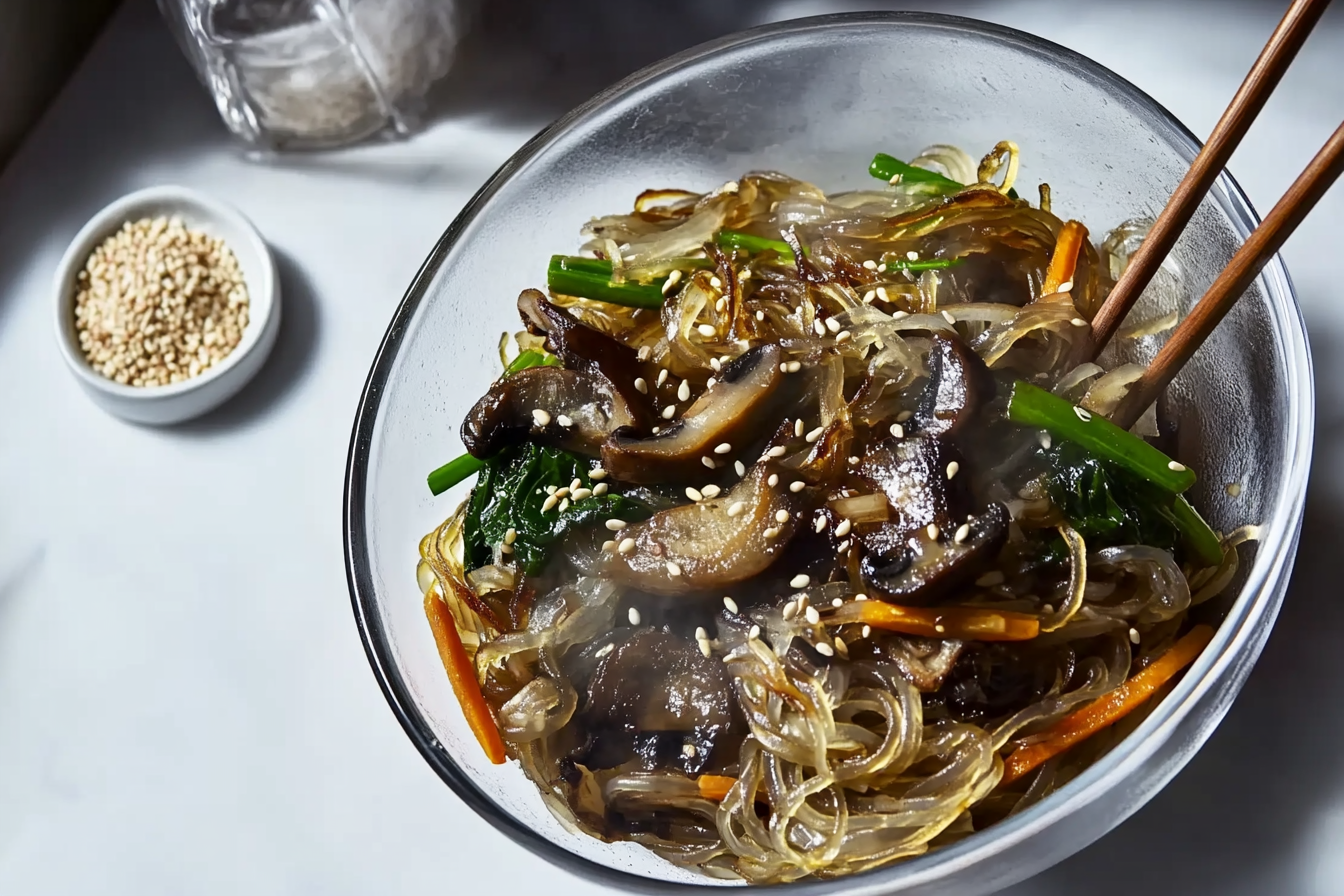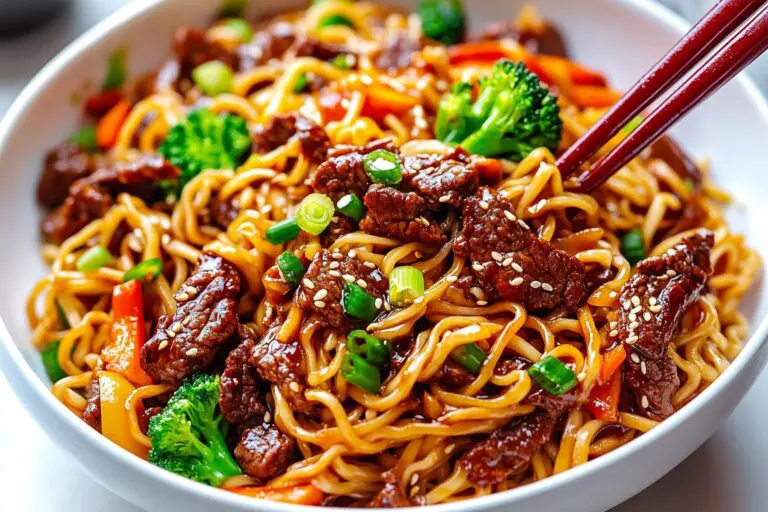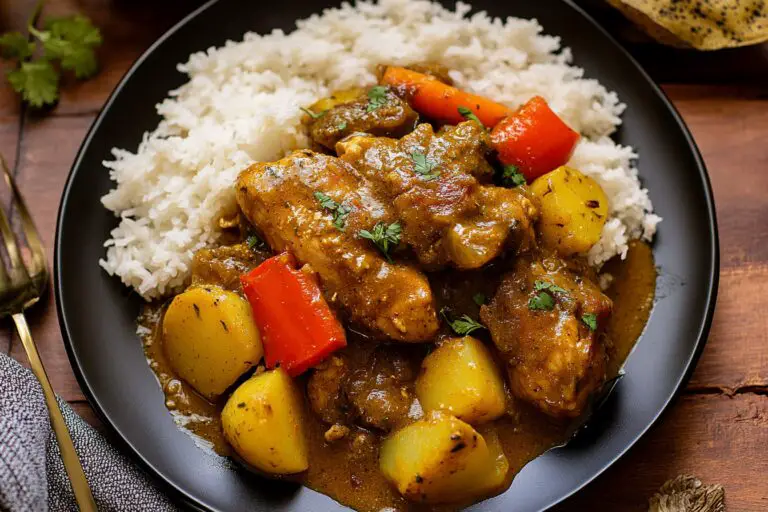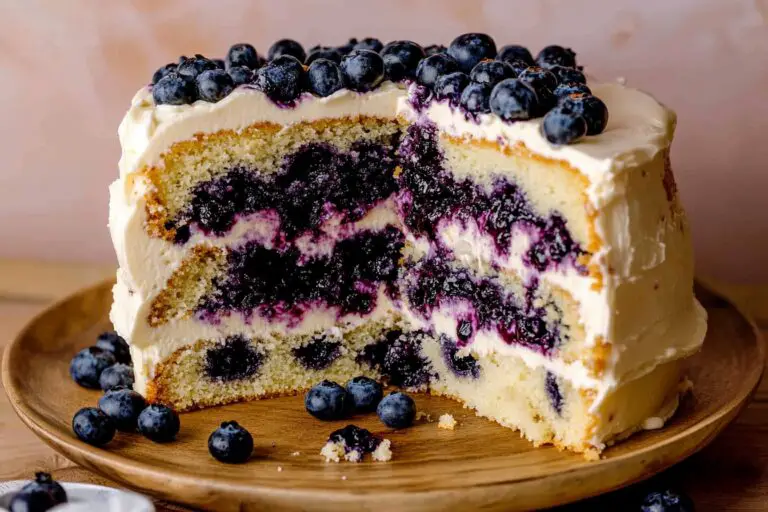Korean Japchae Noodle Stir-Fry
Introduction
Korean Japchae is a beloved dish that beautifully combines the chewy texture of sweet potato noodles with a variety of colorful vegetables and a savory sauce. This stir-fried noodle dish is not only a staple in Korean cuisine but also a popular dish for special occasions. It’s a perfect harmony of flavors and textures, making it a delightful meal for any time of the year.
Detailed Ingredients with measures
Sweet potato noodles (dangmyeon) – 8 ounces
Vegetable oil – 2 tablespoons
Garlic, minced – 3 cloves
Carrot, julienned – 1 medium
Bell pepper, thinly sliced – 1 medium
Spinach – 4 cups
Onion, thinly sliced – 1 medium
Soy sauce – 1/4 cup
Sugar – 1 tablespoon
Sesame oil – 1 tablespoon
Green onions, chopped – 2, for garnish
Sesame seeds – 1 tablespoon, for garnish
Prep Time
20 minutes
Cook Time, Total Time, Yield
Cook Time: 15 minutes
Total Time: 35 minutes
Yield: 4 servings

Detailed Directions and Instructions
Step 1: Prepare Sweet Potato Noodles
Soak 8 ounces of sweet potato noodles in warm water for 30 minutes until softened. Drain and set aside.
Step 2: Cook Noodles
In a large pot, bring water to a boil. Add the soaked noodles and cook for about 5-7 minutes until al dente. Drain and rinse with cold water to stop the cooking process. Cut the noodles into shorter lengths if desired.
Step 3: Prepare Vegetables
While the noodles are cooking, prepare the vegetables: julienne 1 small carrot, slice 2 cups of spinach, and chop 2 green onions.
Step 4: Stir-fry the Vegetables
In a large skillet or wok, heat 2 tablespoons of sesame oil over medium-high heat. Add the carrots and stir-fry for 2 minutes. Then, add the spinach and green onions and stir-fry for another 2-3 minutes until just wilted. Remove the vegetables from the pan and set aside.
Step 5: Stir-fry the Noodles
In the same skillet, add a bit more oil if necessary, and add the drained noodles. Stir-fry for 2 minutes, then add a mixture of 3 tablespoons soy sauce, 1 tablespoon sugar, and 1 teaspoon sesame oil to the noodles. Mix well to combine.
Step 6: Combine Ingredients
Return the stir-fried vegetables to the skillet with the noodles. Toss everything together gently to mix the flavors and heat through.
Step 7: Serve
Transfer the japchae to a serving dish and garnish with sesame seeds. Serve warm or at room temperature.
Notes
Note 1
Feel free to add other vegetables or proteins, such as bell peppers, mushrooms, or beef, to customize your dish.
Note 2
Adjust the amount of soy sauce and sugar according to your taste preference.
Note 3
Japchae can be stored in an airtight container in the refrigerator for up to 3 days. Reheat before serving.

Cook techniques
Stir-Frying
Stir-frying is a quick cooking method that involves cooking food in a pan over high heat while stirring rapidly. This technique is essential for preparing japchae as it helps to maintain the texture and flavor of the ingredients.
Soaking
Soaking glass noodles in warm water before cooking softens them and reduces cooking time. This technique ensures that the noodles are tender and absorb the flavors from the other ingredients.
Sautéing
Sautéing vegetables separately enhances their flavors and ensures they are cooked to perfection. This method allows for better control of doneness and helps maintain the vegetables’ vibrant colors.
Seasoning
Proper seasoning is crucial for bringing out the flavors in japchae. Using soy sauce, sesame oil, and sugar at different stages of cooking enhances the dish’s overall taste.
Presentation
Presentation involves arranging the finished dish attractively on a plate. In japchae, layering the colorful ingredients and garnishing with sesame seeds adds visual appeal.
FAQ
Can I make japchae ahead of time?
Yes, you can prepare japchae ahead of time and store it in the refrigerator. Reheat it gently before serving to restore its texture.
What can I substitute for glass noodles?
If you can’t find glass noodles, you can use rice noodles or even regular pasta as an alternative, although the texture will differ.
What vegetables work best for japchae?
Common vegetables include carrots, spinach, bell peppers, and onions. Feel free to customize based on your preferences or seasonal ingredients.
Is japchae gluten-free?
Yes, japchae can be made gluten-free by using gluten-free soy sauce and ensuring the other ingredients are also gluten-free.
Can I add protein to japchae?
Absolutely! You can add proteins such as beef, chicken, shrimp, or tofu to make the dish more substantial. Just cook the protein separately before adding it to the noodles.
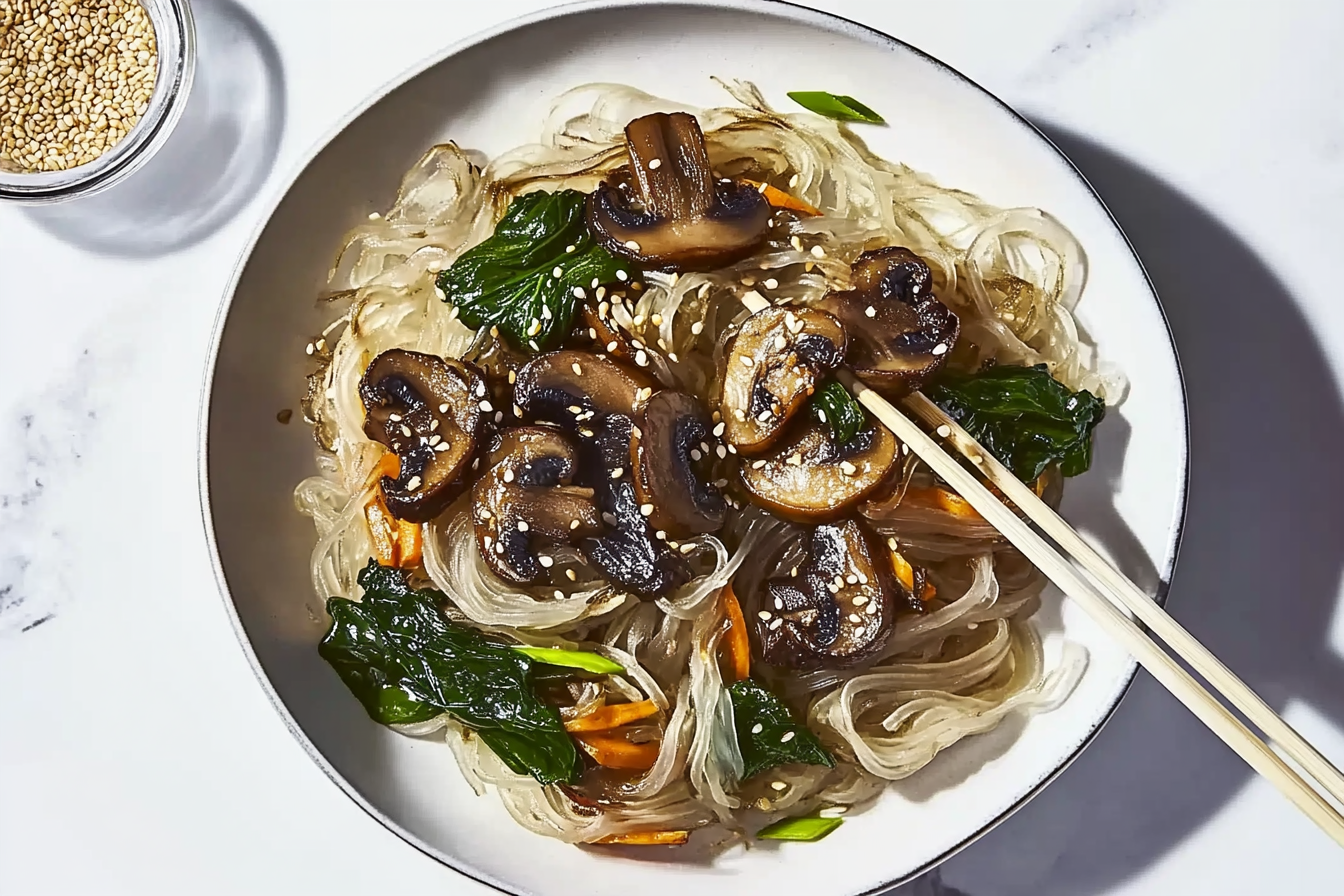
Conclusion
Japchae is not only versatile and flavorful but also a delightful dish that can be enjoyed on various occasions. Its unique combination of sweet potato noodles, vegetables, and savory seasonings creates a harmonious blend that is sure to please any palate. Whether served as a main dish or a side, japchae is a fantastic way to experience the rich flavors of Korean cuisine.
More recipes suggestions and combination
Vegetable Stir-Fry
A simple and colorful vegetable stir-fry can complement japchae beautifully. Use a mix of seasonal vegetables like bell peppers, broccoli, and carrots, all tossed in soy sauce and sesame oil.
Spicy Korean Tofu
Serve alongside spicy Korean tofu for a protein-packed meal. Marinate tofu in gochujang and stir-fry with garlic and green onions to elevate the flavor.
Korean Grilled Beef (Bulgogi)
Pair japchae with bulgogi for a classic Korean feast. The marinated, grilled beef adds a rich and savory element that perfectly matches the sweetness of the noodles.
Kimchi
Add a side of kimchi for an authentic touch. The tangy, fermented vegetables provide a wonderful contrast to the sweetness of japchae.
Korean Fried Chicken
For a heartier option, serve japchae with Korean fried chicken. The crispy texture and bold flavors of the chicken make for an unforgettable combination.
Rice Cakes (Tteokbokki)
Include tteokbokki as a fun and chewy addition to your meal. These spicy rice cakes can bring a kick and an enjoyable texture alongside your dish.

